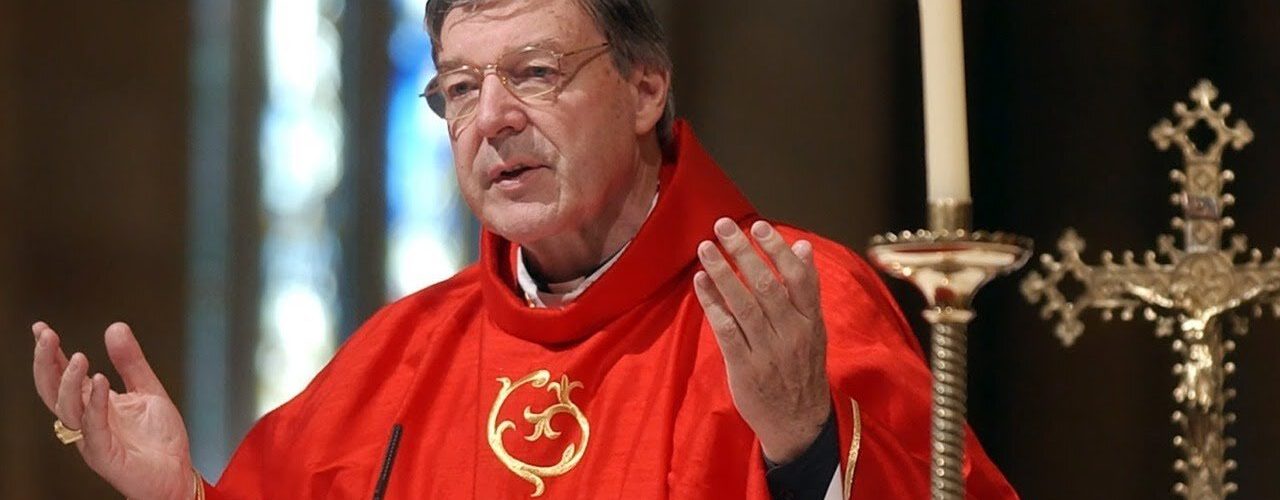
This will be a very simple post about a very complicated religion-news story.
I am referring to the news that lit up Twitter the other day, when the news broke that Australia’s highest court had — with a 7-0 vote — overturned controversial (I need a stronger word) decisions by two lower courts convicting Cardinal George Pell of sexually assaulting two choirboys at the Melbourne cathedral in the 1990s.
I will not attempt to hash out the many ways that the secret nature of these Aussie court proceedings affected the news coverage. I will not discuss the details of the victim’s testimony against Pell and whether it was possible for a bishop, wearing many layers of thick, complicated vestments and almost certainly accompanied by an aide, could have committed these crimes in a public place.
No, my goal here is to contrast the journalism in two elite-media reports — in The Washington Post and then The New York Times — about this final court decision, which set Pell free and unleashed hurricanes of online arguments (yet again).
In terms of journalism, what is the essential difference between these two stories?
First, let’s look at the Post story, which ran with this headline: “Cardinal George Pell is released from prison after court quashes sexual abuse conviction.” If you read this story, you will find several passages like this:
In a written statement, Pell said he felt no ill will toward his accuser and did not want his acquittal to add to the bitterness in the community.
“There is certainly hurt and bitterness enough,” he said. “However, my trial was not a referendum on the Catholic Church, nor a referendum on how church authorities in Australia dealt with the crime of pedophilia in the church.
“The point was whether I had committed these awful crimes, and I did not.”
Readers will also read passages like this one:
The decision is likely to upset Pell’s many detractors, who hold him responsible not just for the alleged assault on the choirboys but for the broader record of the Catholic Church in Australia, where some 4,444 people reported being abused in recent decades, according to an official inquiry. Their average age was about 11 years old.
“This is (one of the reasons) why sexual abuse crimes are not pursued by victims,” an Australian venture capitalist, Elaine Stead, wrote on Twitter. “. . . Reasonable doubt is easy to create. Credibility is not factored highly enough.”
The Post report also includes solid blocks of material from court statements that summarize key elements of the testimony (but it would have helped to have heard more facts about the actual contents of the early trial decisions). Here is one of those summary passages:
In their submissions to the High Court, Pell’s lawyers did not attack the credibility of the single surviving victim. Instead, they argued that even if the man’s evidence was compelling or believable, it was not enough to eliminate the reasonable doubt raised by other witnesses that it wouldn’t have been physically possible for the assaults to occur, given the robes Pell was wearing and the time available after Sunday Mass at St. Patrick’s Cathedral.

So what is different about the Times report, which ran under this sweeping double-decker headline?
George Pell Freed After Australian Court Overturns Sex Abuse Conviction
The cardinal was the highest-ranking Roman Catholic leader ever found guilty of sexually abusing children.
News consumers who read this story will see a short quote from Pell.
Then they will see a litany of statements such as:
The verdict, handed down by Chief Justice Susan Kiefel to a largely empty courtroom in Brisbane because of social distancing measures to help slow the spread of the coronavirus, shocked Catholics in Australia and around the world.
Cardinal Pell had receded from the public mind during his time in prison, and with the exception of his die-hard supporters, most Australians had come to accept his guilt as an established fact.
Also, there is this:
The problems started, the decision suggested, with the single accuser. Because a second complainant had died before a trial began, the case was “wholly dependent upon the acceptance of the truthfulness and the reliability” of one man’s testimony, the judges wrote.
While the jury found him credible, along with a majority of judges in the Court of Appeal, the High Court sided with a dissenting appeals court judge. That judge said that the jury ought to have had a reasonable doubt about Cardinal Pell’s guilt based on testimony from other witnesses who argued that the events described by the accuser did not match the cardinal’s regular Sunday routine.
There were other allegations that were not part of the case. In February 2019, a second trial in which Cardinal Pell was accused of touching boys in a swimming pool in Ballarat was canceled because of legal setbacks.
Karen Monument, the sister of one of the men in that case, said her brother and the family were “devastated” that Cardinal Pell would now walk free.
Here’s one more key passage representing this side of the story:
Phil Nagle, an advocate for abuse victims from Ballarat, Cardinal Pell’s hometown, said that he and others were shocked by the judgment, which engendered further distrust of a court system that they feel has failed to bring many abusers to justice.
We “don’t know what to believe anymore,” Mr. Nagle said, adding that he remained hopeful that further allegations against Cardinal Pell would come to light, and that he ultimately would be brought to trial again. “The journey is a long way from being over for Cardinal Pell,” he said.
So what is missing from this Times report?
While there are long passages — valid, I would add — from enemies and critics of Pell, the story does not include a single quote from an interview from any source backing the cardinal or someone who was an expert on how his many defenders around the world responded to the evidence in the case.
Isn’t that interesting?
How would Times editors defend their decision to print a long news story that skipped over one side of this complicated court battle?
Just asking.










